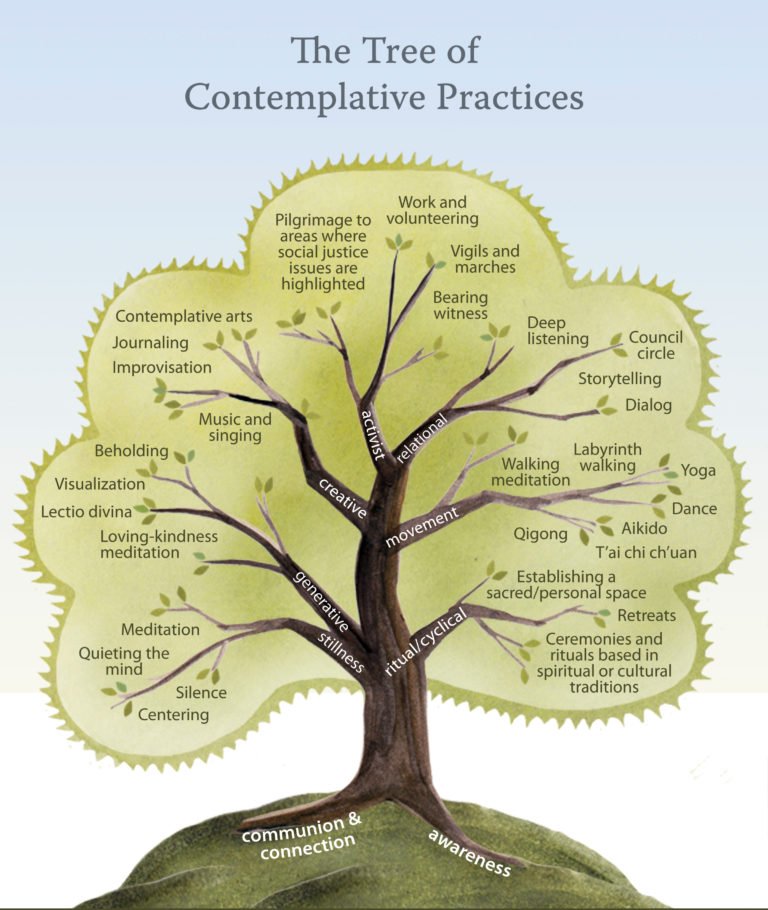How do you follow your Bliss?
Joseph Campbell invented the term "Follow your Bliss" and this is the moment when he shared his method for doing just that - finding a place and time, each day, for just you, to connect to what matters most, to you - what he calls “a Sacred Space”
I’ve recently been re-watching The Power of Myth, a PBS series from 1988, where Bill Moyers interviewed Joseph Campbell, then a professor at Sarah Lawrence who wrote several books developing the idea of “The Hero’s Journey” and exploring the connections between the world’s mythologies. Amazingly, you can watch the whole series on YouTube here.
What Does iT Mean to Have a Sacred Place?
Why would someone need a sacred space, especially if you don't believe in a god or gods? Sacred comes from the Proto-Indo-European root root *sak- which meant to "to sanctify”…which just means to set aside or set apart, much like the idea of an “Inner Sanctum”…an inward, protected place. (FYI, Proto-Indo-European is the language that the Sanskrit language group and the Latin languages sprouted from)
Why DO Leaders need a sacred space?
It’s easy to get pulled into the day to day and get lost. Leadership is about holding the vision and helping other people connect with that vision.
Holding space for others takes energy, focus and intention that needs to be replenished, every day. Sleep gives some replenishment for the body and mind…but a sacred space is for your soul!
Below is a transcription of Campbell’s exhortation to each of us to find our “Bliss Station” each day. I can’t really say it any better than him!
This is a term I like to use now as an absolute necessity for anybody today.
You must have a room or a certain hour a day or so where you do not know what was in the newspapers that morning.
You don't know who your friends are. You don't know what you owe to anybody.
You don't know what anybody owes to you.
But a place where you can simply experience and bring forth what you are and what you might be. This is the place of creative incubation.
And first you may find that nothing's happening there. But if you have a sacred place and use it.
…most of our action is economically or socially determined and does not come out of our life. I don't know whether you've had the experience I've had but as you get older, the claims of the environment upon you are so great that you hardly know where the hell you are.
What is it you intended?
You're always doing something that is required of you.
This minute, that minute, another minute.
Where is your bliss station? Try to find it. Get a phonograph and put on the records. The music that you really love, even if it's corny music that nobody else respects. I mean, the one that you like or the book you want to read.
Get it done and have a place in which to do it
Any Leader who wants to be truly effective needs to find this time, in order to renew themselves, to reorient themselves, to ground themselves.
What do I do in this so-called Sacred Space?
First off, Don’t Underestimate the Power of Self-Reflection (says the Harvard Business Review).
Maybe the simplest and most effective morning practice are Morning Pages. Coined and championed by author Julia Cameron, morning pages ask us to hand-write three pages, long hand, without stopping, first thing each day. It can be transformative if you give it a try.
Not into writing?
Some years ago the wonderful podcast, OnBeing, featured this Tree of Contemplative Practices.
“The branches represent different groupings of practices. For example, Stillness Practices focus on quieting the mind and body in order to develop calmness and focus. Generative Practices may come in many different forms but share the common intent of generating thoughts and feelings, such as thoughts of devotion and compassion, rather than calming and quieting the mind.”
Try walking, singing, sketching…anything that falls under the category of “following your bliss” or stepping back from the day-to-day and giving yourself space to be.
The Tree of Contemplative Practices Image by Carrie Bergman + design by Maia Duerr/The Center for Contemplative Mind in Society..


